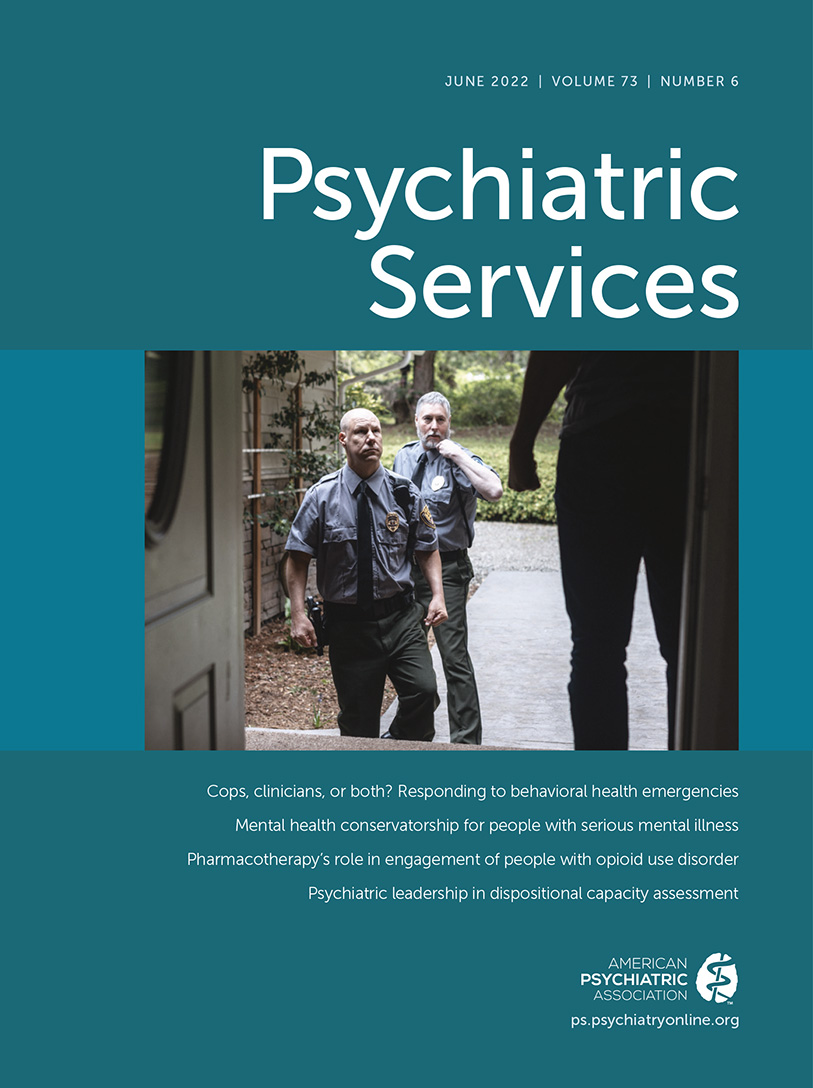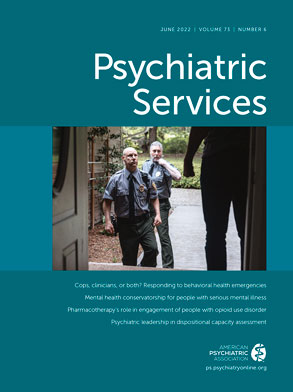Emerging from the first terrible year of the COVID-19 pandemic, the world hopes that effective vaccines will restore something approaching normalcy. Nonetheless, new threats (such as the COVID-19 delta variant) heighten uncertainty, and a psychopathological wave trails the pandemic: rising rates of anxiety, mood, and trauma disorders and suicide risk may persist long after the pandemic subsides (
1). Loss of safety, daily routine, social supports, and the death and chronic illness of significant others have all contributed to psychopathology (
2). Underserved communities and people of color have been particularly hard hit. During the pandemic, telepsychiatry emerged in response to social-distancing requirements (
3), facilitated by relaxation of interstate licensing restrictions. Where will psychotherapy stand in this new future? As longtime psychotherapy clinician-researcher-supervisors, we see our beleaguered field facing both promise and crisis. This Open Forum discusses challenges and proposes needed solutions for psychotherapy.
Background
Psychotherapy, ascendant during the midcentury heyday of psychoanalysis, has been in steady retreat since. The psychopharmacological revolution in the 1950s provoked laments that rounded biopsychosocial psychiatrist-therapists risked replacement by psychopharmacologists or even neurologist-psychiatrists. In the 1980s, managed care, in limiting and denying medical reimbursement, targeted psychiatry and particularly psychotherapy. Psychopharmacology was more easily measured, had better empirical evidence, and seemed cheaper. Psychotherapy suffered self-inflicted injury from fads and quackeries—including primal scream, repressed memory, new age, and gay “conversion” therapies—that hurt its public image. Movie “headshrinkers” frequently appeared as fools, sexual predators, or monsters. These reversals occurred partly because psychotherapists had neglected outcome research, relying more on belief and clinical wisdom than on science.
Fifty years ago, however, rigorous randomized controlled trials began to demonstrate the efficacy of manualized, adherence-monitored, and time-limited treatments, including cognitive-behavioral, interpersonal, and some forms of psychodynamic psychotherapy. These psychotherapies entered treatment guidelines and became mandated, in limited degree, in psychiatric residency training. An array of psychotherapies has now demonstrated efficacy across numerous psychiatric disorders. Patients generally prefer psychotherapy to medication, even as national treatment patterns indicate that treatment delivery is shifting to pharmacotherapy.
Already under lengthy siege, American psychotherapy now faces new threats. It appears undervalued within psychiatry and in broader society, perhaps viewed as old-fashioned, low tech, and time and labor intensive. Public recognition of distinctions among treatment approaches appears limited. Psychotherapy faces diluted training, a devaluing shift to cheaper, less well-trained therapists, and vanishing clinical research funding.
Dilution
Effective psychotherapy is an intense emotional encounter between a skilled therapist and a suffering patient in a shared space. The therapist must understand and maintain an organized treatment approach while tolerating powerful, and sometimes painful, affects and responding empathically and judiciously to the patient as a person (
4). Doing psychotherapy well requires practice and experience. It is hard, rewarding work. The emotional depth of sessions cements the experience for patients, rendering their understanding of their situation more than the intellectualized, abstract construct of a didactic explanation would yield.
Yet American psychotherapy is moving away from fundamental skills, particularly from a focus on emotional capacity, that permit and facilitate such meaningful encounters. Managed care insurance plans encourage cut-rate psychotherapy by the cheapest, generally least trained “providers.” “Providers” are deemed generic and interchangeable. A simplistic assumption abounds that a manual or script suffices to treat patients. Cheery, upbeat therapist stances can reinforce patients’ maladaptive emotional distancing and avoidance and aggravate feelings of living with incomprehensible problems. Some pundits even suggest therapists are superfluous. Online bot programs and apps are proliferating.
Currently, too many training programs lack understanding of or fluency in the underlying psychotherapeutic “common factors” that serve as bedrock for specialized technical approaches. Having written treatment manuals, we recognize their value in defining therapies and allowing their rigorous testing. Yet conducting manualized psychotherapies requires more than scripts; therapists require more than technical skills. Recitation from a manual sacrifices the rhythm of the treatment and the individuality of the patient. In the end, psychotherapies are only as good as the therapists who deliver them. Therapy with a brand name does not ensure its delivery as intended.
The cultural zeitgeist suggests that we all can become an expert in anything with a little online training. Therapists receive increasingly superficial psychotherapy training. This may partly reflect the scope of American psychiatry: the growing preeminence of neuroscience, broadened range of pharmacotherapies and somatic therapies, increasing burdens of documentation, and administrative requirements. Trainees spend more time on electronic medical records, less with patients, even then often typing or scanning their screens. Many psychology programs are gravitating toward approaches that minimize tolerance of negative affects, offering instead encouragement, hopeful nostrums, and focus on homework (
4). Too little experiential training in psychotherapy leaves trainees affect-phobic and uncomfortable sitting with patients and tolerating strong emotion. Although some therapists are “naturals,” knowing instinctively how and when to respond to distressed patients, our teaching- and videotape-based supervision has too frequently found that many psychotherapists shy away from emotional intensity (
4). The outcome is often mediocre: an intellectualized discussion or theoretical argument that lacks emotional vibrancy and that patients therefore discount.
Thus, although psychotherapies have demonstrated unprecedented efficacy and specific potencies, the therapists delivering them too often may lack basic training to use them effectively. In the COVID-19 era, with treatment forced wholesale into remote, virtual mode and protective social supports attenuated (
2,
3), we need involved, skilled therapists more than ever.
Allure of the New: Apps and Bots
Many years after Breuer and Freud’s 1895 Studies on Hysteria, psychotherapy may seem old-fashioned. Our digital era embraces the flash of novelty. An undervaluation of deeper human emotions and connections pervading the culture may contribute to psychotherapy’s devaluation. Talk therapy may seem too labor intensive, too slow, and insufficiently novel when high-tech, scientific-sounding, sleek apps and brain devices (e.g., transcranial magnetic stimulation) offer digital, impersonal, and seemingly crisper alternatives.
The Internet and nonstop news cycle have denatured time and health: heavy social media use is associated with greater psychopathology. Attention span and frustration tolerance have fallen as media outlets have monetized our time into seconds. The COVID-19 pandemic has magnified these problems. Constant electronic distraction has downgraded emotional intimacy, affecting psychotherapy as well. Meaningful emotional change takes time sitting with and learning to tolerate one’s feelings. This pace, slower than an adrenaline buzz or mescaline hit, may frighten people.
Within a generation, the twin smartphone casualties of eye contact and conversation—replaced by screen eye-lock and texting—have diminished social contact and emotional intensity and strained social skill development. People no longer look at one another or communicate as before. Texting, surely the worst way to communicate feeling, breeds emotional misunderstanding. The pandemic-driven move from in-person to remote therapy, while preserving treatment access, has further attenuated the interpersonal connection basic to understanding oneself and others and essential to emotional change (
2,
3).
The “Woebot” app, which received U.S. Food and Drug Administration (FDA) Breakthrough Device status for managing postpartum depression in May 2021, says, “Welcome to the future of mental health” (see
https://woebothealth.com). Automated therapy could massively disseminate inexpensive treatment. Will it work? Therapy bots may communicate behavioral exercises, offer affirmations, or monitor symptoms or homework adherence. Not all patients like them. How would these bots fare at an empathic human moment with a patient with complicated bereavement or in suicidal crisis? The digital outcome literature is sparse, with apps often being employed as therapy adjuncts. Research trials have understandably limited participant symptom severity because of internal review board safety concerns (
3).
Woebot’s only PubMed-listed randomized trial, for 70 “nonclinical” participants from a university social media site, compared ≤20 Woebot self-help sessions over 2 weeks with a National Institute of Mental Health (NIMH) e-book, “Depression in College Students,” not intended as treatment (
5). Scores on the nine-item Patient Health Questionnaire fell from 14 to 11 (both in the “moderately depressed” range) with Woebot and were unchanged with the e-book. The authors describe this within-group improvement as “significant,” which is statistically accurate but clinically slight.
We tried Woebot. The invitation e-mail encourages the user to “start chatting.” Immediate disclaimers appear: “Woebot is not a crisis service. Woebot is a self-help tool that is not intended to be a medical intervention. If you are in crisis type ‘SOS’ in the app, and Woebot will provide you external resources that may help.” Typing “SOS” at the first opportunity, however, elicited: “SOS. That’s a nice name.” This program, offering “brain candy” and frightened chicken parables to encourage anxious subjects to “project assurance and confidence,” could not replace even the weakest therapist for an ill patient. Its generic, algorithmic responses lack true therapeutic alliance. So much for an FDA-approved app.
Strangled Psychotherapy Research Funding
NIMH has long supported invaluable psychotherapy outcome research, validating treatments for many major psychiatric disorders. NIMH-funded research supported university faculty who taught and supervised trainees and brought academic rigor to psychotherapy. In the past decade, NIMH’s near-exclusive focus on neuroscience has essentially shut down the clinical research pipeline on which psychotherapy research depended. This shift in funding priorities leaves many psychotherapy questions unanswered, strips promising junior faculty of psychotherapy career paths, and strains teaching resources as senior psychotherapists retire. The consequences for psychotherapy and clinical psychiatric training appear dire.
Relieving the Siege
The current dissemination of COVID-19 vaccines permits thinking ahead to postpandemic psychotherapy. Pundits have applauded advantages of teletherapy, which COVID-19 has transformed from niche treatment to standard practice, providing isolated patients a psychotherapy lifeline during the pandemic (
2,
3). Teletherapy offers access and privacy (assuming the home allows private conversations and that patients have sufficient means to support Internet access) and obviates commuting. Continuing to allow interstate teletherapy would benefit some patients. Yet teletherapy has disadvantages, too, by incorporating many contemporary distractions (
3).
Teletherapy lacks the intimacy of shared physical space. It distracts through beeping e-mails, compromised transmission, the physical discomfort of being locked before the screen, and the distancing of the two-dimensional screen itself (
3). Viewing a “talking head” complicates reading body language and facial expression, particularly with dissociated or emotionally constricted patients, and even more so with children. Teletherapy enhances avoidance opportunities for avoidant patients (
3). Vulnerable patients in low-income or abusive households often cannot access secure, private care via telehealth. Again, people of color have been disproportionately affected by insufficient care access.
Thus, the affectively detached teletherapy medium impedes a corrective, normalizing emotional experience. Teletherapy may be inimical to particular psychotherapy formats. Group therapy loses some interactivity online. Child psychotherapy—such as play therapy—becomes essentially untenable. Many patients and therapists are “Zoomed out.” We therefore recommend, as safety permits, a return to in-person therapy, reserving teletherapy as an alternative rather than using it as the default option. More direct, in-person encounters will likely have better outcomes, although comparative studies are limited (
3). NIMH should fund such trials.
Therapists should model reality-based, noncatastrophic behavior. As risks recede, overcautiously continuing teletherapy with local patients carries iatrogenic risk for aggravating patient anxiety and escalating ballooning rates of agoraphobia postpandemic (
6). Training programs should promote in-person psychotherapy as optimal both for patient care and therapist training.
The postpandemic transition may be a moment when psychotherapies fit most patients’ needs better than medications. Psychotherapies facilitate altering outlook and understanding life changes in changing times. Public health would suffer terribly if well-conducted psychotherapy became a historical relic. Trainees from non–affect-focused therapy backgrounds have commented on the added dimension that emotionally focused treatments offer not only patients but the trainees themselves. Psychiatric and psychotherapy associations must publicly and politically advocate for continuing teletherapy, while emphasizing the primacy of in-person psychotherapy. We hope that the resurgence of hope and gradual return toward normalcy postpandemic will bring a return to the normalizing strengths of standard, in-person psychotherapy.

